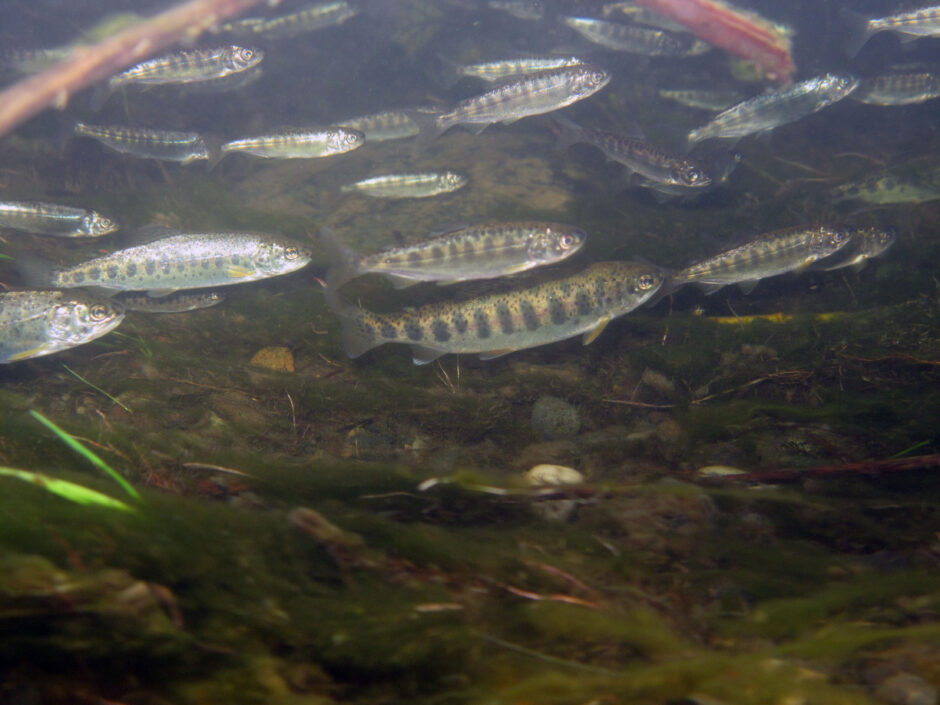Chinook Salmon Stocking in the Great Lakes
 Chinook Salmon. (Credit: Dan Cox / USFWS via Flickr CC BY 2.0)
Chinook Salmon. (Credit: Dan Cox / USFWS via Flickr CC BY 2.0)Despite a long and checkered history, the North American Great Lakes have become a stable habitat for several species of salmon. Though not native to the region, species like Chinook salmon were introduced to the lakes in the 1870s and have since become a cornerstone of the fishery. Salmon are keystone species that are popular with anglers, and for much of the species’ history in the Great Lakes, they’ve faced difficulties in keeping stocks high.
Why the Great Lakes Stock Chinook Salmon
Such issues have been consistent throughout Chinook’s history in the region. The Michigan DNR reports that when they were first introduced, Chinook failed to reproduce and soon disappeared from the lakes, which led to restocking. Just short of a century later, alewives and rainbow smelt invaded the region. These invasives thrived in the Great Lakes and made up 90 percent of the Great Lakes’ biomass at their peak population. The algae-rich region provided an abundance of food for these species, which led to an overpopulation of invasives.
The problem with allowing alewives and rainbow smelt to establish themselves in the area is that the species harm native life. Whether it be eating the fry and eggs of native species or outcompeting other prey fish, their presence in the Great Lakes is of great concern to resource managers hoping to preserve the fishery.
Fortunately, alewives and rainbow smelt are part of the diets of Chinook, meaning that food was abundant for salmon following the invasion. Still, local resource departments were concerned about the presence of invasives in the region and sought to treat the problem by stocking a greater number of Chinook salmon.
Decisions to stock the lakes have typically coincided with increases in invasive populations. Although states like Michigan stock the fish annually, they increase stocking rates when alewife populations are exceptionally high, according to the Milwaukee Journal Sentinel. A good indicator of high alewife populations is dead alewife washing up on shore. In 2022, such events led to an increase in annual Chinook stockings.
How the Great Lakes Tracks Stocked Fish
While stocking efforts have had a significant impact on local population counts, fishery managers need to understand natural spawning rates in order to maintain population levels. Stocked salmon are often tagged in some way to distinguish native-born and hatchery-raised salmon.
For states like Wisconsin, the state DNR has historically clipped the adipose fin of Chinook and other stocked fish like steelhead and lake trout. Tracking the survival of these stocked fish are just one way for the department to track the success of the fishery. Alternatively, some stocks are tagged in place of or in addition to the clipping. In 2010, Wisconsin partnered with the USFWS to complete their massive fin-clipping program, which also involved injecting a coded wire tag into the fish.
The tags are not only helpful for tracking the stocked fish but also for assessing native reproduction rates. While the clipped fins can regenerate and some fish are missed in tagging, a caught fish that does not show evidence of tagging is likely a sign of natural rearing. Data on fin-clipped Chinook is gathered by creel surveys and returned tags after the fish has been caught.
Conclusion
Fin-clipping and other forms of tagging are common practices in stocking initiatives across the United States. While tagging techniques have advanced drastically over the past several years, fin-clipping is likely to continue as an inexpensive means of tracking non-native populations and the success of hatchery programs.


0 comments